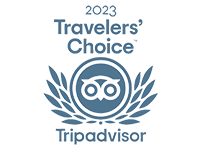Bac Ha Travel Guide: Explore Vibrant Ethnic Cultures In North Vietnam

Besides Sapa, a famous tourist destination, let's explore Bac Ha in northern Vietnam together today. This is a small town hidden in the heart of wild mountains. Still preserving all of its pristine beauty, from majestic nature to the unique cultural identity of the ethnic minorities, Bac Ha is increasingly attracting travelers in search of authentic adventures and peaceful experiences in the mountains of northwestern Vietnam.
Table of Contents
I. Overview of Bac Ha Vietnam
Bac Ha (Vietnamese name: Bắc Hà) is a district located in the northeast of Lao Cai province, Vietnam, about 100 km from Sapa (approximately a 4-hour drive). Bac Ha’s geographical position is unique, as it borders several districts and provinces, including Ha Giang.
Bac Ha is home to more than 18 ethnic groups in Vietnam, such as the Dao, Tay, Nung, Hoa,... Among them, the Hmong ethnic group accounts for about half of the district's population. The name "Bắc Hà" comes from the Tay language, "Pạc ha," symbolizing the cultural connection between the ethnic groups and the region’s stunning natural beauty.
Located in a high mountain area, Bac Ha enjoys a cool climate, with an average temperature ranging between 18°C and 22°C (72°F), making it an ideal destination to visit all year round. Bac Ha is a must-see destination for those seeking tranquility and wishing to experience the authentic culture of northwestern Vietnam.

II. When to visit Bac Ha in northern Vietnam?
With its mountainous terrain and cool climate year-round, you can travel to Bac Ha almost any time of the year.
However, the ideal time to visit Bac Ha, Vietnam, is from January to March. In spring, you will have the opportunity to admire peach, plum, and pear orchards in bloom, covering the northern mountains of Vietnam with shades of white and pink. Additionally, many traditional festivals take place in Bac Ha at the beginning of the year, such as the Lunar New Year, the Long Tong festival of the Tay ethnic group, the Say San festival of the Hmong people, and more.
In May and June, the vegetation is at its greenest as the water season nourishes Bac Ha’s rice terraces. In September and October, visitors can witness the golden rice terraces during the golden season, offering a picturesque landscape.
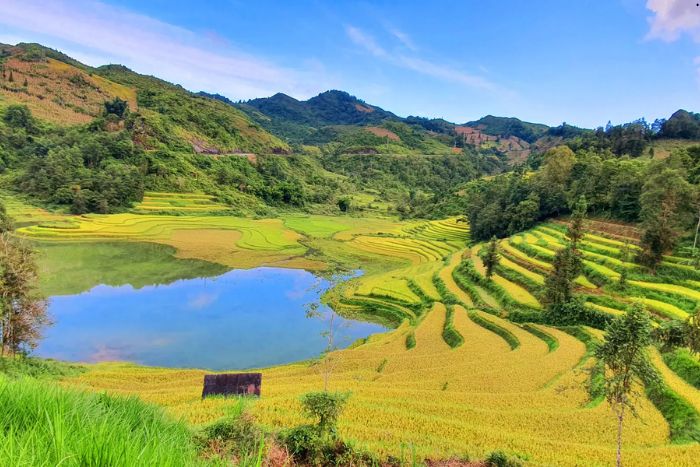
III. How to get to Bac Ha Vietnam?
You have several transport options to reach Bac Ha:
- By plane: If you're coming from central or southern Vietnam, you will first need to take a flight to Hanoi, then continue by road to Bac Ha, located in the northwest of Vietnam.
- By bus or limousine: You can take a sleeper bus or a limousine to Lao Cai, and then continue by car or motorbike taxi to Bac Ha district. If you are departing from Hanoi, buses are available at My Dinh bus station, with a journey of about 4 hours to reach Lao Cai (the ticket costs around 250,000 VND, approximately 10 USD for a one-way trip).
- By private car with a driver: Renting a car with a driver in Vietnam is an increasingly popular option to get to Bac Ha. It offers greater flexibility in your travels while saving time, thanks to an experienced driver who will ensure a memorable travel experience.
IV. What to do and see in Bac Ha?
1. Visit the famous Bac Ha ethnic market
Held every Sunday, the Bac Ha market is an opportunity to meet various ethnic groups from northern Vietnam. Due to the difficulty of travel between villages, this ethnic market is held only once a week, at the center of the Bac Ha district. It is also one of the oldest ethnic markets in the region, reflecting the rich and colorful culture of the local minorities, attracting all visitors at least once during their stay in Bac Ha.
2. Admire the Bac Ha Flower Valley
About 2 km from Bac Ha town, you will find the charming flower valley in San Bay village, Thai Giang Pho commune. This valley is home to numerous varieties of flowers that bloom throughout the year, depending on the season. You will be immersed in a fragrant and colorful space, surrounded by majestic limestone mountains.
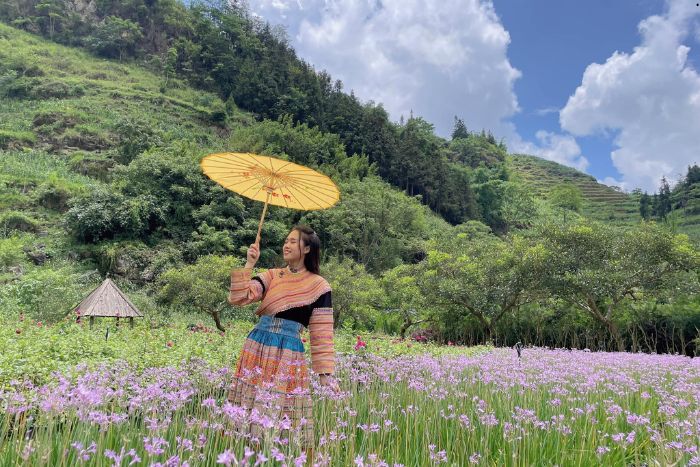
3. Visit sacred temples in Bac Ha
In Bac Ha, several sacred sites play an important role in the religion and history of the local population. Among them is the Bac Ha Temple, associated with the heroic exploits of the Vu Van Mat and Vu Van Uyen brothers during the wars.
Additionally, the Trung Do Temple, classified as a national historical monument in Vietnam, is worth a visit. Built more than 300 years ago, it has been restored to promote the spiritual culture of the region.
4. Explore the Hoang A Tuong Palace
Built-in 1914, the Hoang A Tuong Palace reflects the ancient architecture of Bac Ha's aristocracy. Commissioned by Hoang Yen Tchao, a representative of the ruling class at the time, this mansion served as both his residence and workplace, as well as that of his son Hoang A Tuong. Today, the restored residence showcases photos and historical documents, allowing visitors to better understand Bac Ha's history.
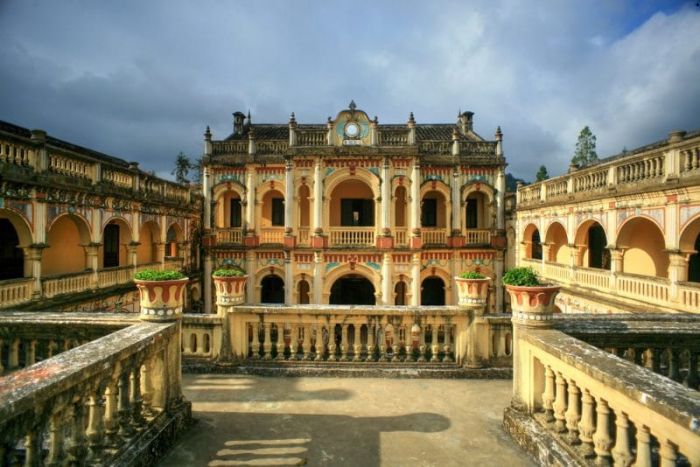
5. Discover the ethnic villages in Bac Ha
The ethnic villages of Bac Ha are must-visit destinations if you want to immerse yourself in the culture, customs, and lifestyle of the northern Vietnamese ethnic groups. You can visit Ban Pho village, home to the Hmong people, to taste the traditional corn wine, or spend a night in a stilt house with the Tay people in the Trung Do village. You will also be amazed by the vast terraced rice fields in the village of Lien. These unforgettable experiences will make your stay in Bac Ha truly memorable.
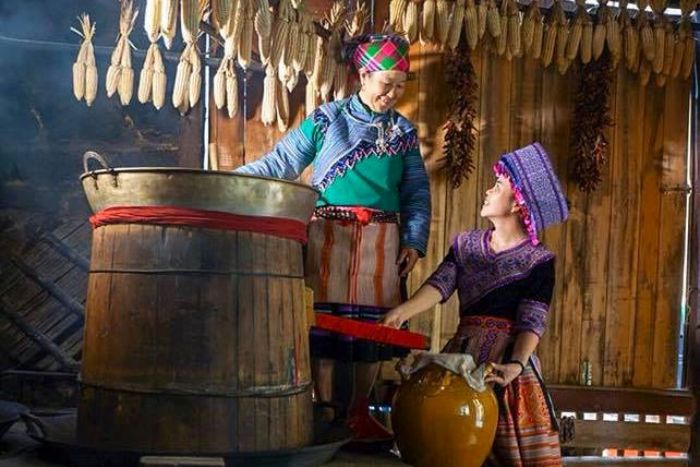
Here is an essential travel guide to Bac Ha, Vietnam. We hope this information will be useful for your trip to northern Vietnam. Feel free to contact Autour Asia, your Vietnam travel company. for any questions! Our travel advisors will help you organize a personalized itinerary for an unforgettable vacation in this beautiful Southeast Asian country.
Bac Ha is located in a beautiful region surrounded by other attractions. You can visit Sapa, with its stunning rice terraces and ethnic villages, or explore the Hoang Su Phi terraces. The region is also home to several national parks and nature reserves, offering opportunities for trekking and exploring remote villages.
While Bac Ha is technically possible to visit on a day trip from Hanoi, it is quite far (about 8-10 hours by car). For a more relaxed experience, it's recommended to plan a multi-day trip that allows you to explore Bac Ha and the surrounding region without rushing. A trip to Bac Ha Sapa in 3 days would give you more time to appreciate the local culture and landscape.
Bac Ha, like many rural areas in Vietnam, may not be fully accessible for people with disabilities, especially in terms of infrastructure like ramps or elevators. The region’s terrain can be rugged, so if you have mobility issues, it's recommended to contact local accommodations or tour operators in advance to inquire about accessibility and make necessary arrangements.
Related travel guide
Other similar articles
CUSTOMIZABLE BY LOCAL EXPERTS
Personalized trip at the original price!
REFUND GUARANTEE
We believe in our work and promise to give you money back.
GOOD PRICE / QUALITY
95% satisfied more than expected!
24/7 LOCAL SUPPORT
We are always available online to provide assistance at any time.
Most read articles
Autour Asia is highly recommended on
Embracing the mission of "Satisfied more than expected" and providing authentic experiences, we have received numerous recommendations on reputable travel forums:






















